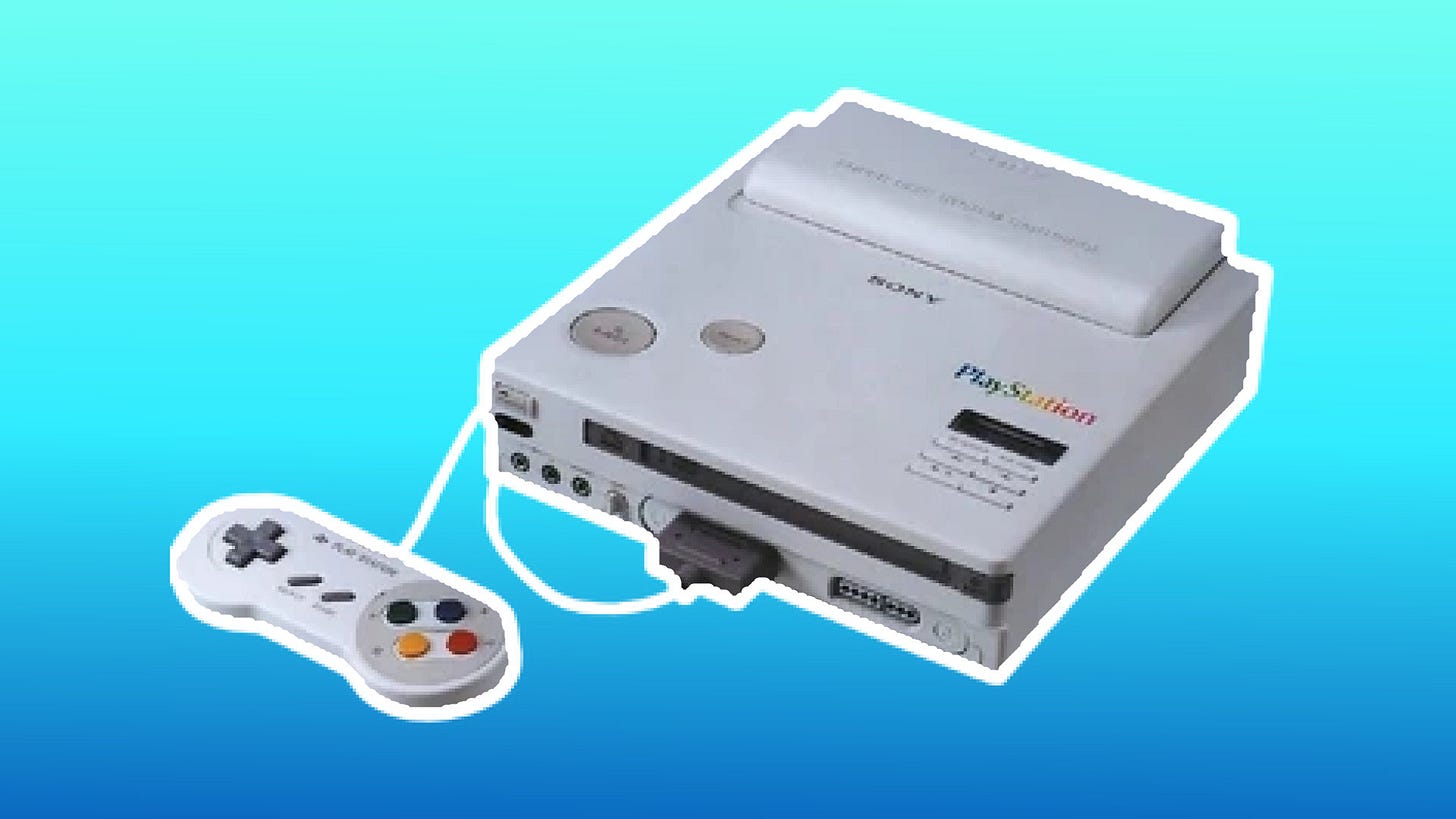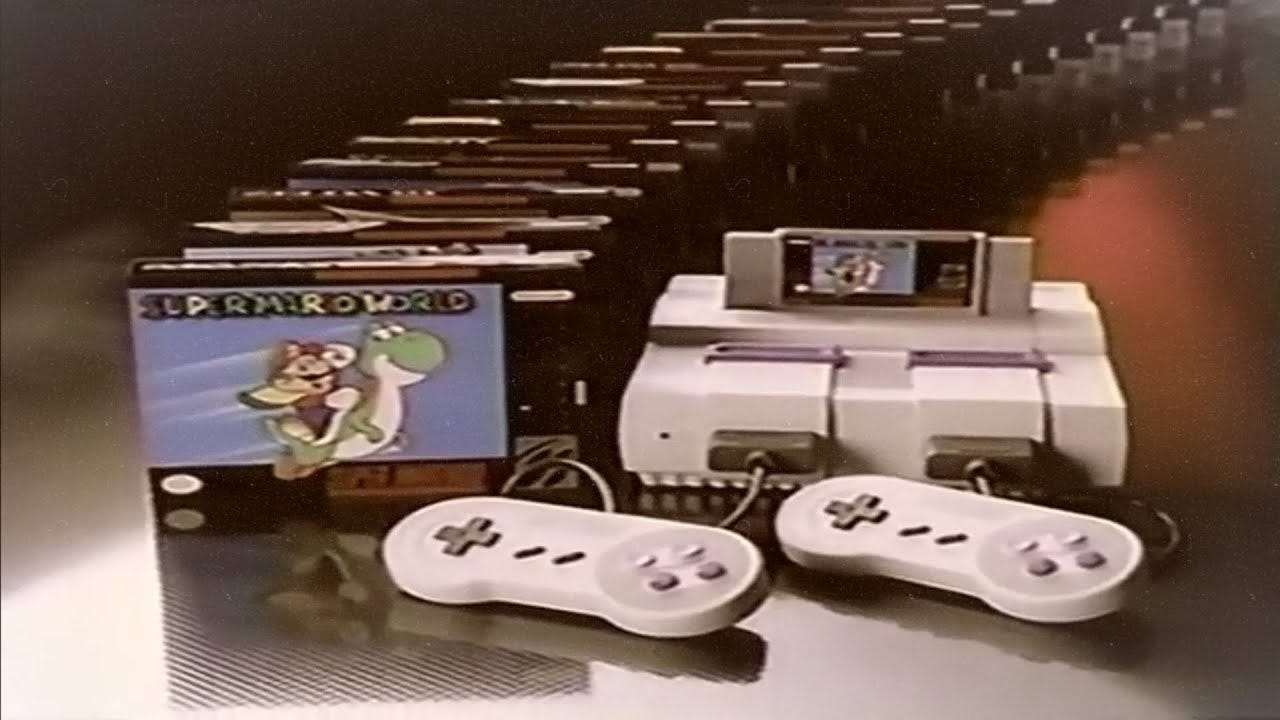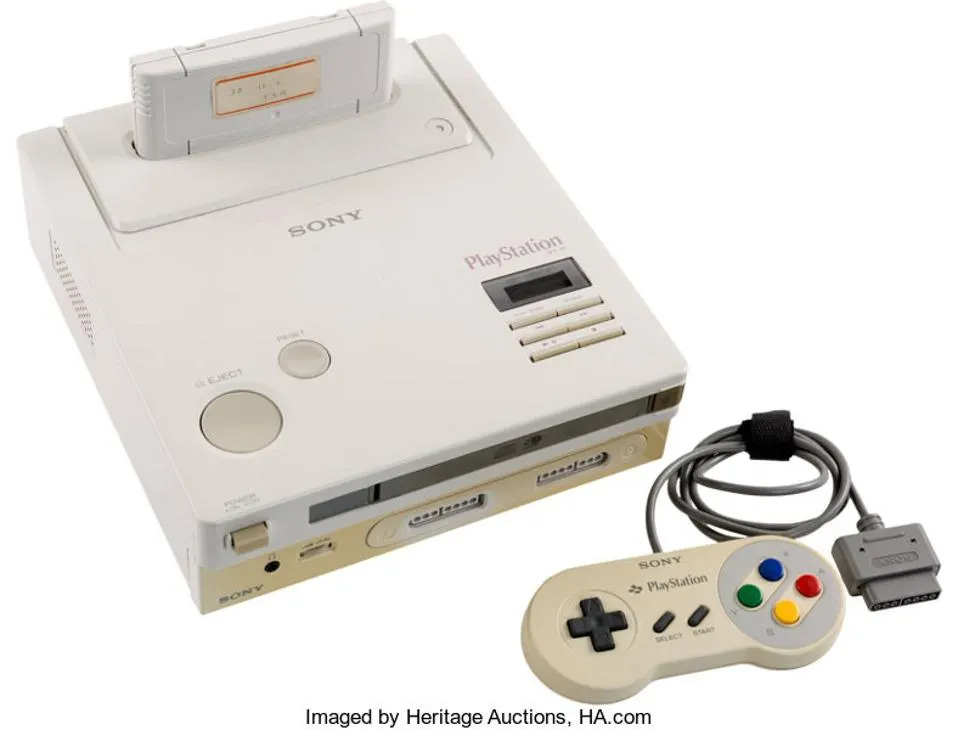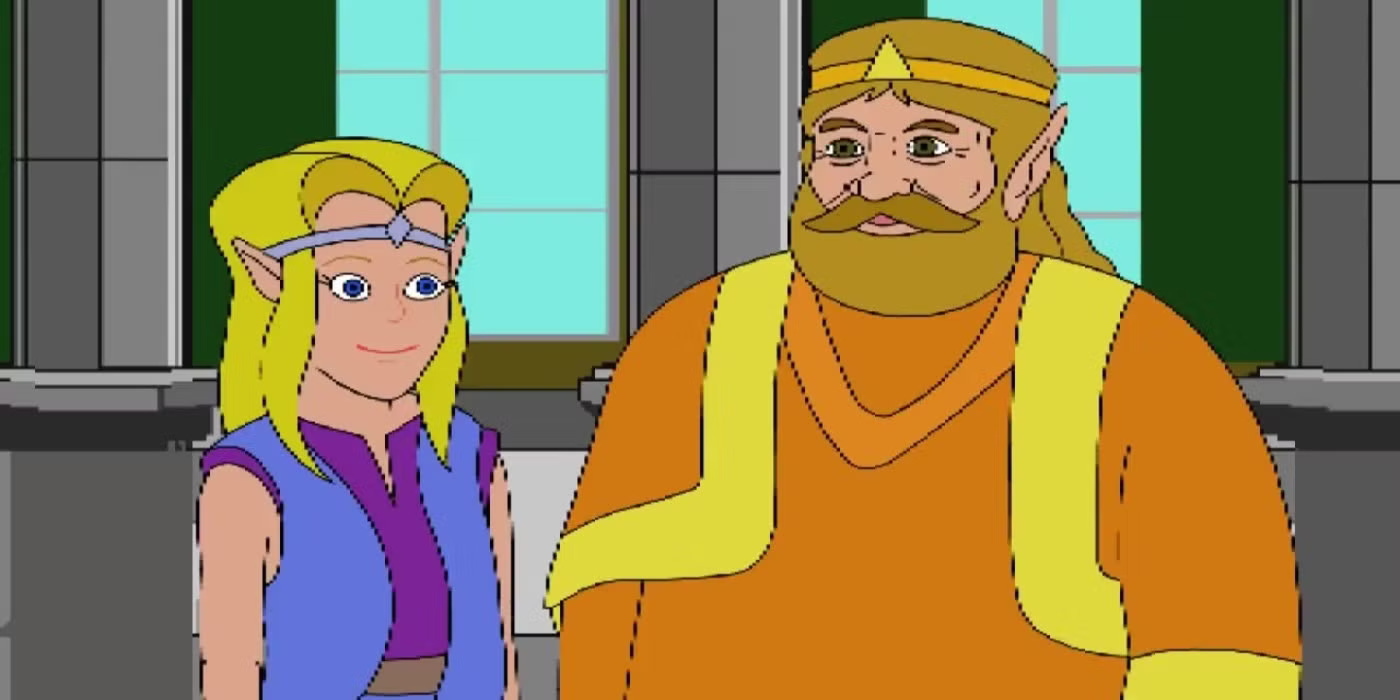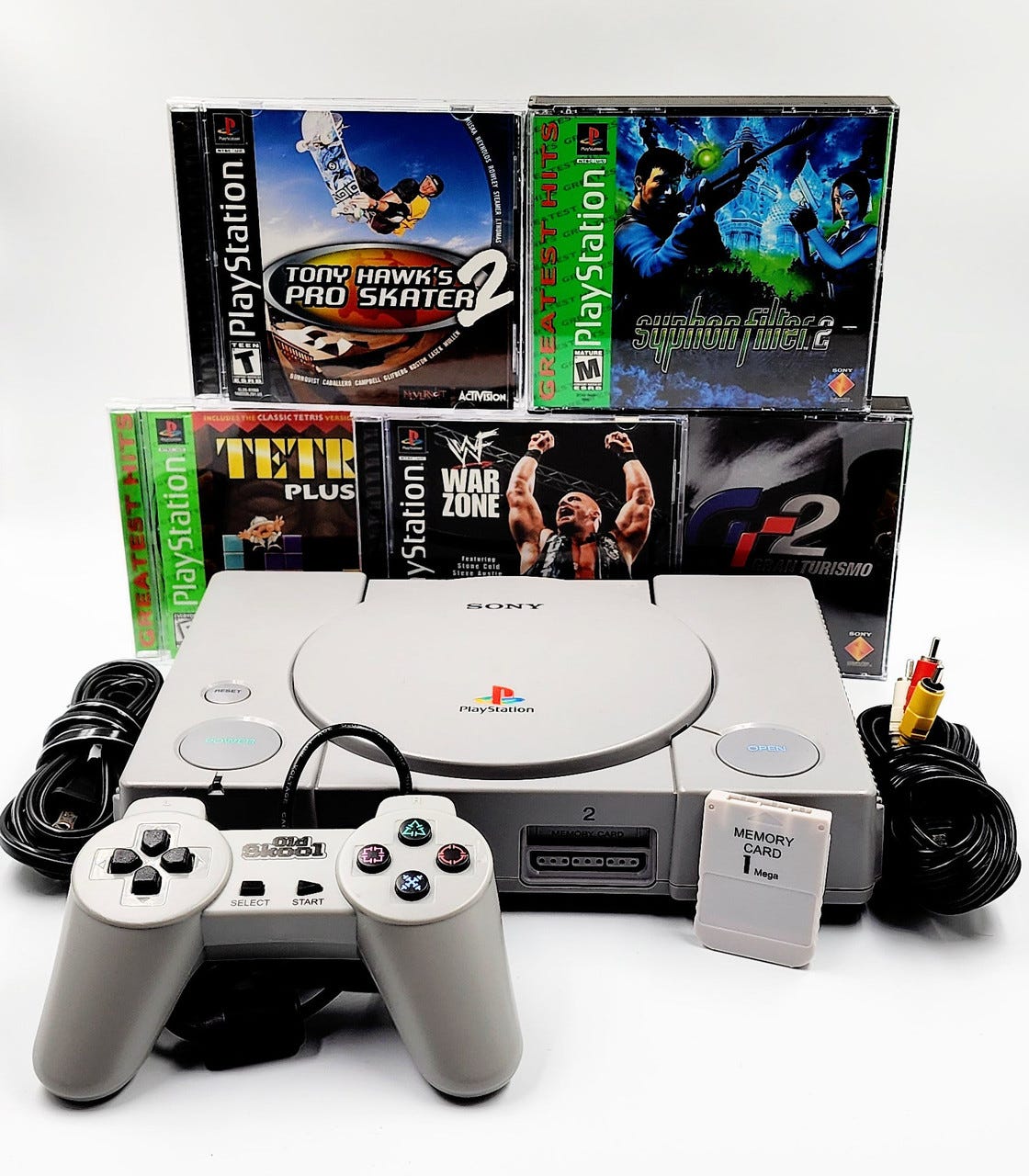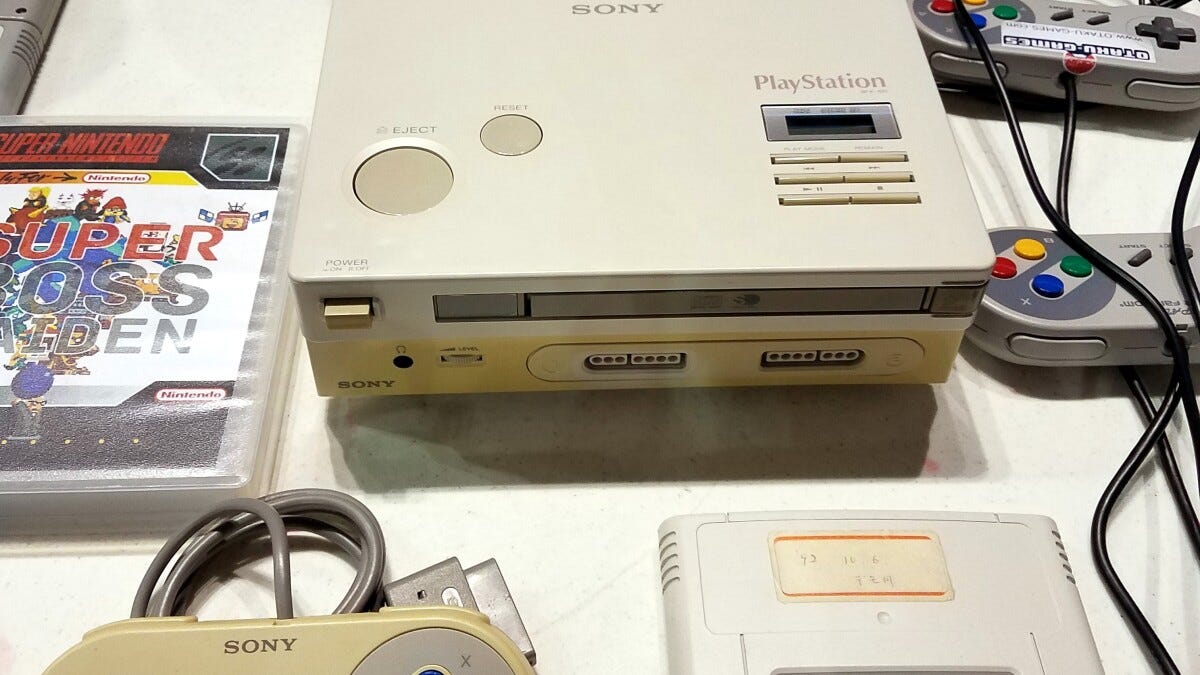NINTENDO PlayStation?! How Sony Beat Nintendo at Their Own Game in the 1990s!
The story of the Nintendo PlayStation—a rare prototype born from a short-lived partnership between Nintendo and Sony—reveals how a shocking betrayal at CES 1991 gave rise to the PlayStation empire and forever changed the gaming industry.
Here’s the TL;DR...
The Unlikely Partnership: In the late '80s, Nintendo and Sony teamed up to create a CD-ROM add-on for the Super Nintendo Entertainment System (SNES), aiming to combine cartridge gaming with the vast storage and audio potential of CDs.
The Dramatic Betrayal: Nintendo abruptly ditched Sony for Philips at CES 1991, leaving Sony humiliated in front of the tech world—like getting dumped via jumbotron at a baseball game.
Sony’s Epic Comeback: Fueled by spite, Sony developed the standalone PlayStation, launched in 1994, which dominated with 3D graphics, affordable CDs, and a massive third-party game library.
Nintendo’s Misstep: Sticking with cartridges for the Nintendo 64, Nintendo lost ground to Sony’s CD-driven juggernaut, ending their reign as gaming’s sole superpower.
Legacy and Prototypes: The fallout sparked the console wars, and rare “Nintendo PlayStation” prototypes became collector’s treasures, with one selling for $360,000 and another surfacing in 2025.
Picture this: it’s the late '80s, and Nintendo is the undisputed king of gaming, ruling with an iron joystick. Mario’s jumping, Zelda’s questing, and kids everywhere are blowing dust out of NES cartridges like it’s a sacred ritual.
But the tech world is buzzing about CDs—shiny discs promising bigger games, better sound, and cheaper production. Nintendo, not one to miss a trend, partners with Sony, a company more known for Walkmans than warp pipes.
What follows is a tale of ambition, betrayal, and a corporate middle finger that birthed the PlayStation empire. Buckle up for a deep dive into the Nintendo PlayStation saga—a story so wild it could headline a tech soap opera. We’ll fact-check the myths, keep it funny, and explore how one bad breakup changed gaming forever.
The Golden Age of Nintendo: Cartridges Rule the World
It’s 1988, and Nintendo is the Beyoncé of video games—flawless, iconic, and untouchable. The NES had saved the industry from the 1983 crash, selling over 60 million units globally.
By 1990, the SNES upped the ante with 16-bit graphics, delivering bangers like Super Mario World and The Legend of Zelda: A Link to the Past. Cartridges were king: fast, reliable, but expensive and storage-limited. Developers were cramming epic RPGs into chips smaller than a credit card—like trying to stuff a dragon into a fanny pack.
Meanwhile, CDs were the new hotness. With 650 MB of storage compared to a cartridge’s max of 16 MB, they could hold cinematic cutscenes, orchestral soundtracks, and entire encyclopedias. Sega was tinkering with the Sega CD for the Genesis, and Nintendo didn’t want to be left behind.
Enter Sony. They’d already designed the SNES’s sound chip, so a partnership made sense—Batman teaming up with Iron Man. In 1988, Nintendo contracted Sony to develop a CD-ROM peripheral for the SNES, codenamed “Play Station” (with a space).
Sony envisioned a hybrid console that could handle both SNES cartridges and Sony’s proprietary “Super Disc” CDs. By 1991, they had built around 200 prototypes with a cartridge slot, CD drive, and SNES controller ports.
CES 1991: The Honeymoon Ends in a Public Dump
June 1991, CES in Chicago. Sony takes the stage, announcing the “Play Station” collaboration with Nintendo. The crowd is hyped—CDs could mean sprawling RPGs, voice acting that doesn’t sound like a modem, and full-motion video that isn’t VHS grain.
Then, the next day, Nintendo announces a partnership with Philips instead. Sony is blindsided, humiliated in front of the entire tech world.
Why? Control and money. Sony’s deal gave them rights to license and profit from CD-based games. Nintendo’s president, Hiroshi Yamauchi, saw it as a threat. Philips offered a deal where Nintendo kept full software control. Philips also got to use Nintendo IPs for their CD-i console—home to infamous flops like Link: The Faces of Evil.
Yamauchi had been secretly negotiating with Philips for months. When the betrayal hit, Sony engineer Ken Kutaragi didn’t sulk. Instead, he pitched Sony’s board: “Forget Nintendo. Let’s build our own console.” By May 1992, Sony had cut ties and gone all-in on its own project.
From Ashes to Empire: Sony Builds the PlayStation
Sony had prototypes, R&D, and ambition. They ditched SNES compatibility and went for a pure CD-based console. Specs for 1994 were cutting-edge: a 32-bit RISC processor, 2 MB of RAM, and 3D graphics pushing 360,000 polygons per second.
But their real edge was courting developers. Nintendo’s high licensing fees and strict content rules had alienated studios. Sony offered lower royalties, creative freedom, and cheaper CD production.
Square Enix jumped ship, giving PlayStation Final Fantasy VII. Namco brought Ridge Racer. Capcom delivered Resident Evil. From 100 launch titles, the library swelled past 1,000 by the console’s end.
The PlayStation launched in Japan on December 3, 1994, selling 100,000 units day one. The U.S. release in September 1995 was $299—$100 less than Sega’s Saturn. Sony’s edgy ads (“U R Not E”) hit their teen/adult target perfectly.
By 2000, the PlayStation had sold over 100 million units, crushing the SNES’s 49 million.
Nintendo’s Hangover: The N64 and the Cartridge Curse
Nintendo stuck with cartridges for the N64 in 1996. The system delivered 3D masterpieces like Super Mario 64 and Ocarina of Time, but cartridges were expensive, small in storage, and unattractive to third-party developers.
Square’s move to PlayStation for Final Fantasy hurt. The N64 sold just 32 million units—well below PlayStation numbers.
Meanwhile, the Philips deal was a bust. The CD-i failed, and its Nintendo-licensed games became memes. Nintendo wouldn’t switch to discs until the GameCube in 2001, by which time Sony’s PlayStation 2 was already dominating.
The Prototypes: Gaming’s Holy Grails
Most Nintendo PlayStation prototypes were destroyed. One resurfaced in 2015, bought at a bankruptcy auction for $75. It played SNES games and CDs, though no games were made for the CD drive.
Restored by modder Ben Heck, it sold in 2020 for $360,000 to collector Greg McLemore, who plans to display it in a museum.
Then in March 2025, another prototype appeared—reportedly from Ken Kutaragi’s own collection. Pristine, with a blue logo and extra ports, it offered a tantalizing glimpse into a world where Nintendo and Sony stayed together.
Legacy: How One Breakup Shaped Modern Gaming
The fallout from the Nintendo-Sony split ignited the console wars, driving innovation. Sony’s rise made gaming more accessible and diverse. Nintendo pivoted to handhelds, later reinventing itself with the Wii.
Today, the PlayStation 5 and Nintendo Switch coexist, but the echoes of that 1991 betrayal still shape the industry.
A failed peripheral created a $150 billion empire. If Nintendo hadn’t dumped Sony, “PlayStation” might just be a trivia answer instead of a gaming dynasty.
Sources:
Nintendo PlayStation – PlayStation Wiki — https://playstation.fandom.com/wiki/Nintendo_PlayStation
PlayStation at 30: The betrayal and revenge story of the PS1 – VGC — https://www.videogameschronicle.com/features/playstation-at-30-the-betrayal-and-revenge-story-of-the-ps1/
Super NES CD-ROM – Wikipedia — https://en.wikipedia.org/wiki/Super_NES_CD-ROM
Nintendo PlayStation – Nintendo Wiki — https://nintendo.fandom.com/wiki/Nintendo_PlayStation
A brief history of the Nintendo PlayStation – Destructoid — https://www.destructoid.com/that-nintendo-playstation-works/
The story behind Nintendo’s betrayal of Sony – GamesBeat — https://gamesbeat.com/the-story-behind-nintendos-betrayal-of-sony-and-how-it-created-its-fiercest-rival/
The Nintendo PlayStation is the coolest console never released – TechRadar — https://www.techradar.com/news/gaming/the-nintendo-playstation-is-the-coolest-console-never-released-1327988
The history of PlayStation was almost very different – Polygon — https://www.polygon.com/features/2019/12/6/20999590/the-history-of-playstation-was-almost-very-different/
Nintendo is to blame for PlayStation’s existence – MARCA — https://www.marca.com/en/technology/gaming/2024/12/03/674eee39e2704ea2728b45a6.html
This is who bought that rare Nintendo PlayStation prototype – Eurogamer — https://www.eurogamer.net/this-is-who-bought-that-rare-nintendo-playstation-prototype
Father of the PlayStation, Ken Kutaragi, showcases rare Nintendo PlayStation prototype – TweakTown — https://www.tweaktown.com/news/104098/father-of-the-playstation-ken-kutaragi-showcases-rare-nintendo-prototype/index.html
Nintendo PlayStation: Ultra-rare prototype sells for £230,000 – BBC — https://www.bbc.com/news/technology-51628836
A second Nintendo PlayStation prototype has been uncovered – TechSpot — https://www.techspot.com/news/107226-second-nintendo-playstation-prototype-has-uncovered.html
The last known Nintendo PlayStation prototype is up for auction – Business Insider — https://www.businessinsider.com/nintendo-playstation-prototype-auction-history-sale-2020-1
PlayStation (console) – Wikipedia — https://en.wikipedia.org/wiki/PlayStation_%28console%29
30 years of PlayStation: How Nintendo’s snub created a gaming giant – Yahoo Tech — https://tech.yahoo.com/gaming/articles/30-years-playstation-nintendos-snub-095715898.html
Compiled and edited by Derek Gibbs for D/REZZED.


